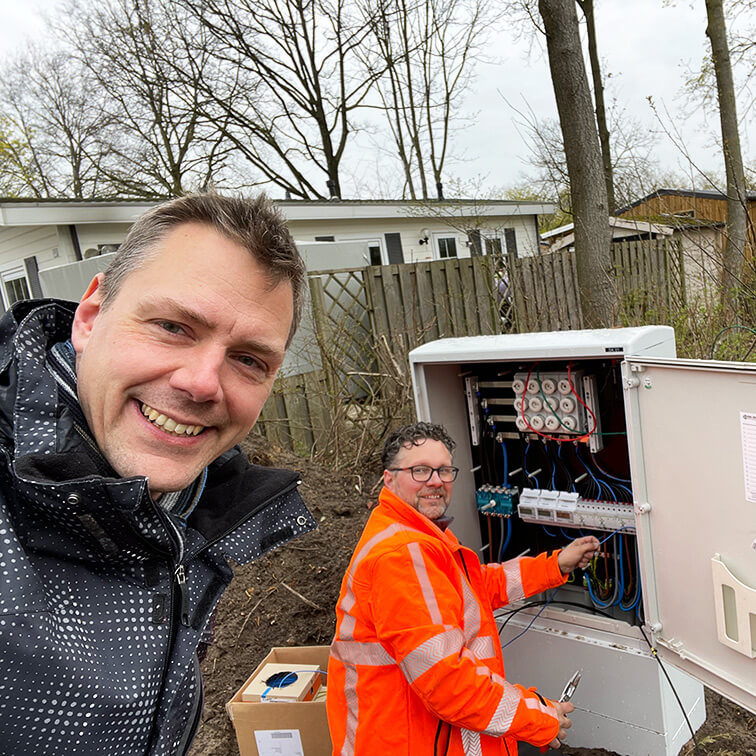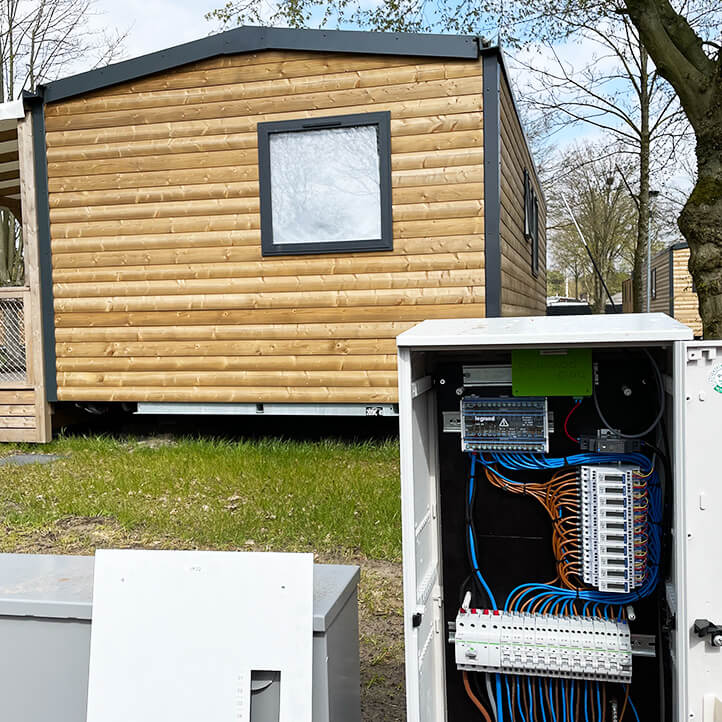Taylor made battery solutions
We develop tailor made Energy Management Systems for battery applications. This can be as small as a stand-alone peak shave application or as big as a battery swarm for congestion management on DSO level. From our experience it is never just a battery application.
With an EMS you are in control of using a mix of (renewable) energy sources before and behind the meter in an optimal manner and at the right moment. We accomplish this not only by means of battery, but also by means of intelligent load management. With flexibility in energy usage, we shift load even without use of battery.

INTERREG PROJECT
Energy needs for holiday parks revisited
The transition to sustainable energy causes the electrification of many products and facilities. This switch poses new challenges for operators of holiday parks. The management costs of the electricity grid are rising, and the risk of overload is becoming a reality. With new calculation models and smart software solutions, BePowered and Van Hees Infra Techniek join forces to cleverly align infrastructure with new energy needs.
Holiday parks can be compared to a small village. But where in a village the grid operator is responsible for the infrastructural energy network, in a holiday park the manager of that park bears the responsibility. The energy transition is changing the energy needs in holiday parks, but the infrastructure is not yet adapted.
The transition to sustainable energy causes the electrification of many products.
Management costs of the electricity grid are rising and risks of overload is becoming a reality.
Energy needs are not aligned with the available infrastructure.

INTERREG PROJECt
Changing energy needs
An example: a family rents a cottage in a holiday park and returns from a day at the beach. The car is connected to the charging station, they cook electrically, someone turns on the air conditioning (heat pump with cooling), one of the children takes a hot shower (electric boiler turns on) and at the same time someone goes into the jacuzzi. A gigantic simultaneity of energy consumption. And that’s only within one holiday home.
It’s not just simultaneous energy consumption that’s increasing. Peak power will be different in the future, heating will shift to be electric, active cooling will be required, local production from sun or wind will grow, the importance of energy storage will increase, and so on.
INTERREG PROJECt
Smart techniques to avoid overload
In order to simultaneously use comfort installations and thus not put any extra stress on the electrical infrastructure, it is necessary to implement smarter techniques.
With Van Hees Infra Techniek its specialization in Recreation Technology and the construction of underground infrastructure, they are the ideal partner for a CR2SE project. Patrick van Hees (Van Hees Infra Techniek): “We have experience in the recreation market while BePowered is very strong in software solutions in energy management. By combining this knowledge and expertise it becomes possible to realize appropriate solutions for the clients in the recreation market.”
“The current calculation models for electrical infrastructures (e.g. cable dimensioning) are not designed for ‘all-electric’ holiday parks. With new dimensioning models and smart control, we can better adapt the infrastructure to the new needs and avoid overload. This way, energy demand is maximally attuned to the local grid or sustainable energy sources such as solar panels.”

Our goals
With this project, we aim to reduce energy costs for holiday park operators, and facilitate charging infrastructure rollout in the leisure market.
The smart infrastructure is tailored to sustainable energy sources and requires less copper due to improved sizing. This will also have a positive impact on CO₂-reduction. For a holiday park with about 120 residential units, an estimated reduction of 10 tons of CO₂ can be achieved. It is expected that within 3 years, 33 parks can be equipped with the new techniques, which will result in an annual reduction of approximately 946 tons of CO₂.
